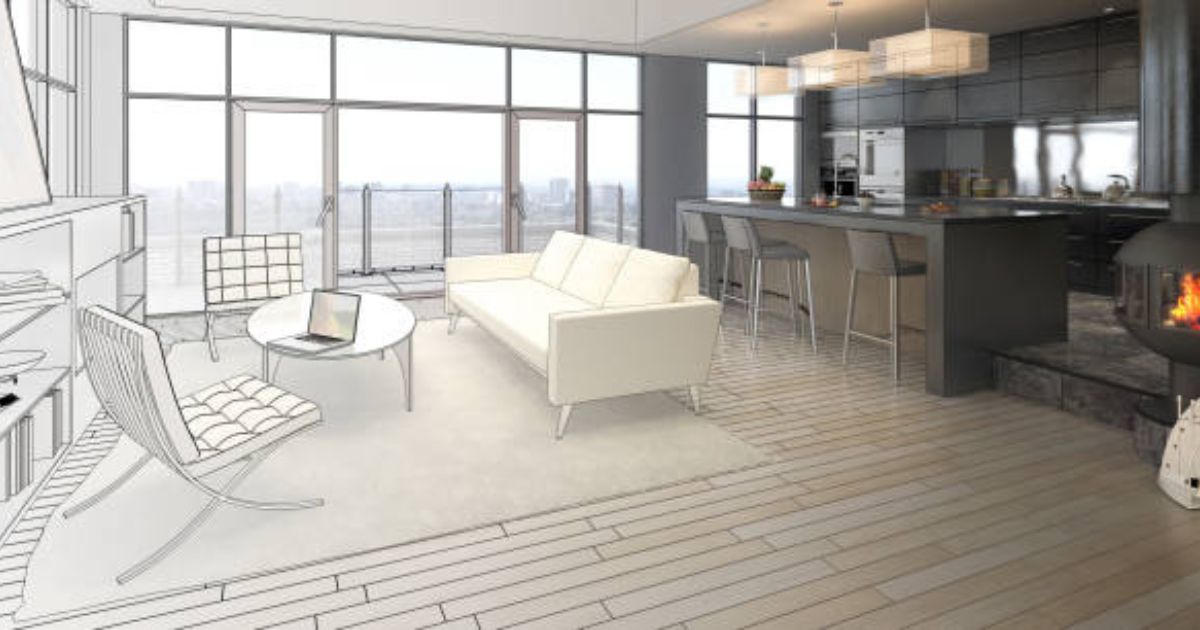The field of product design and prototyping has multiplied in recent years, with the introduction of various tools and technologies to aid the design process.
One such technology is furniture rendering. which involves creating digital images of furniture designs to help visualize them realistically and accurately.
Importance of Furniture Rendering in Product Design and Prototyping
Visualizing furniture designs in a three-dimensional space is crucial for product designers and manufacturers. This enables them to detect any design flaws or issues in the early stages, ultimately improving the quality of the final product and reducing production costs.
Apart from aiding designers in identifying design problems, showcasing furniture designs to clients and stakeholders is also a significant benefit. It provides them with a comprehensive understanding of the end product and can be instrumental in the marketing and sales of furniture products by helping potential customers visualize the design and features of the furniture.
Purpose of the Paper and Key Research Questions
This paper aims to explore the role of furniture rendering in product design and prototyping. Specifically, this paper seeks to answer the following research questions:
What is furniture rendering, and how is it used in product design and prototyping?
What are the benefits of furniture rendering in product design and prototyping?
What are the current trends and technologies in furniture rendering?
How can furniture rendering be used to improve the overall design and manufacturing process of furniture products?
What is Furniture Rendering, and How is it Used in Product Design and Prototyping?
Furniture rendering involves creating digital images of furniture designs using specialized software. These images can be made from 2D sketches, CAD models, or even photographs of existing furniture. Once the digital images are created, they can be manipulated to simulate various lighting conditions, materials, and textures, creating a realistic and accurate representation of the final product.
Furniture rendering is used in product design and prototyping to help visualize the design and identify any flaws or design issues early in the process. This allows designers and manufacturers to make changes to the design before the final product is manufactured, reducing the overall cost of production and improving product quality.
Benefits of Furniture Rendering in Product Design and Prototyping
The benefits of furniture rendering in product design and prototyping are numerous. Firstly, furniture rendering allows designers to create realistic and accurate representations of their designs, providing a better understanding of the final product. This can be particularly useful in the marketing and sales of products, as it helps potential customers visualize the design and features of the furniture.
Furniture rendering also allows designers to identify any flaws or design issues early in the process, improving product quality and reducing costs. This is because any necessary changes can be made to the design before the final product is manufactured, reducing the need for expensive rework.
Current Trends and Technologies in Furniture Rendering
The field of furniture rendering is constantly evolving, with new technologies and trends always emerging. In recent years, one trend that has emerged is using virtual reality (VR) and augmented reality (AR) in furniture rendering. This allows designers to create immersive customer experiences, providing a better understanding of the final product.
Another trend in furniture rendering is the use of cloud-based rendering services. This allows designers to create high-quality renderings without expensive hardware or software. Instead, the rendering is done on remote servers, allowing designers to focus on other aspects of the design process.
How Furniture Rendering can be Used to Improve the Overall Design and Manufacturing Process of Furniture Products
Furniture rendering can improve furniture products’ overall design and manufacturing process in several ways.
Firstly, furniture rendering allows designers to create more accurate and realistic representations of their designs. This helps to ensure that the final product meets the designer’s vision and specifications. By visualizing the outcome in a 3D space, designers can identify design issues or flaws early in the process, improving product quality. This can result in cost savings by reducing the need for rework or expensive changes later in the design process.
Secondly, furniture rendering can reduce the time required for product development. By providing designers a realistic representation of the final product, they can make informed decisions and work more efficiently. For example, if a designer notices that a specific design component is not feasible, they can change the design before the final product is manufactured. This saves time and reduces the need for extensive product testing.
Thirdly, furniture rendering can also aid in the manufacturing process. By providing detailed images of the final product, manufacturers can better understand the specifications and requirements of the product. This can lead to more accurate production and assembly, reducing the likelihood of errors or defects.
Moreover, furniture rendering can also showcase the final product to clients and stakeholders. By providing high-quality and realistic images of the product, designers can effectively communicate the design and features of the furniture. This can help in the marketing and sales of products, as potential customers can better understand the design and functionality of the furniture.
Lastly, furniture rendering can also contribute to sustainable and eco-friendly product design. By visualizing the design in a digital space, designers can experiment with different materials and configurations, reducing the need for physical prototypes. This saves resources and reduces waste, leading to a more sustainable and environmentally friendly design process.
Importance of Product Design and Prototyping in the Furniture Industry
Product design and prototyping play a critical role in the furniture industry. Effective product design and prototyping enable furniture manufacturers to produce high-quality products that meet customer expectations. In addition, effective product design and prototyping can help manufacturers reduce production costs and increase their profit margins. The design and prototyping process helps furniture manufacturers ensure they produce products that meet customer needs and are aesthetically pleasing.
Methods Used in Product Design and Prototyping
There are various methods used in product design and prototyping. One of the most common methods is computer-aided design (CAD) software. CAD software enables designers to create 3D models of furniture designs, which can be viewed from different angles. This allows designers to refine the design and make any necessary changes before creating a physical prototype.
Another method used in product design and prototyping is rapid prototyping technologies such as 3D printing. 3D printing allows designers to create physical prototypes quickly and easily, making it an ideal method for small-scale production runs. Rapid prototyping can reduce production costs and enable manufacturers to test the product design before committing to full-scale production.
Role of Furniture Rendering in Product Design and Prototyping
Furniture rendering plays a crucial role in product design and prototyping. Furniture rendering enables designers to create photorealistic 3D models of furniture designs. This allows designers to visualize the design realistically, which can help identify any design issues or flaws early in the design process. Furniture rendering can reduce production costs and improve the final product’s quality.
Furniture rendering also enables manufacturers to showcase the final product to customers and stakeholders. High-quality and realistic images of furniture designs can help market and sell the product, as potential customers can better understand the design and functionality of the furniture. Furniture rendering can also contribute to sustainable and eco-friendly product design, as designers can experiment with different materials and configurations, reducing the need for physical prototypes.
Current Literature on Furniture Rendering in Product Design and Prototyping
There is significant literature on furniture rendering in product design and prototyping. According to a study by Kusuma et al. (2018), furniture rendering can improve the accuracy and quality of furniture designs, reducing the need for physical prototypes and resulting in cost savings. The study also found that furniture rendering can enable designers to create more innovative and creative designs.
A recent study conducted by Yang et al. (2021) has indicated that the use of 3D rendering technology in furniture design can lead to a reduction in product development time and an improvement in the quality of the final product. The study emphasizes the importance of this technology for product designers and manufacturers, enabling them to produce innovative and high-quality products that align with the needs of customers.
Overall, the existing literature highlights the significance of 3D rendering technology in furniture design and prototyping. This technology provides designers with the ability to create precise and realistic representations of furniture designs, ultimately reducing the necessity for physical prototypes and elevating the quality of the final product. Additionally, 3D rendering technology has the potential to contribute to sustainable and eco-friendly product design, making it an essential tool for furniture manufacturers.
Conclusion:
The use of advanced technologies is crucial for furniture manufacturers to develop innovative and high-quality products that meet the demands of their customers while also contributing to sustainable and eco-friendly designs. Apart from traditional product design and prototyping methods, embracing emerging technologies can enhance the overall manufacturing process, leading to superior products and greater customer satisfaction. Therefore, to remain competitive and achieve success in the furniture industry, manufacturers must adopt modern approaches and tools.






